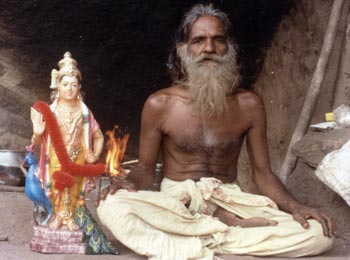 
Long eclipse of Sri Lankan culture is ending

|
|
A scene from the film Sadātanika Sampradaya
|
Scholars at the University of California are looking to Sri Lanka for possible solutions to the dilemmas of modern science.
How, they ask, could such a small nation survive for thousands of years and manage to preserve intact its diverse cultural traditions?
The world, already wracked by terrorism soul conventional warfare, stands on the brink of the ultimate devastation of nuclear war. Mankind's
survival may finally depend upon its ability to recover the wisdom of its ancestors and apply it to present circumstances.
Patrick Harrigan, University of California, Berkeley, doctoral student in South Asia Studies
who is now visiting Sri Lanka, says, "Here one finds as nowhere else in the world all the classical ingredients of an ancient and ongoing struggle between two modalities of thought that are mutually unintelligible -- almost separate worlds to themselves.
On the one hand you have the civilizing mentality associated with urban life in general and modern or Western
ways of thinking in particular and, on the other hand, a much older traditional modality based upon rural culture, most often associated with the so-called Third World.
The outcome of their interaction may determine mankind's future -- if indeed mankind has any future at all. All the causes of that titanic
struggle as well as their potential resolution can be found in microcosm here in Sri Lanka.
Lack of confidence in one's own culture, combined with the blind acceptance of all things new and foreign,
has resulted in what social scientists term the "pizza-effect". The pizza, originally
the simple unleavened bread of Italy, accompanied early emigrants to America, where
it became embellished with cheese, anchovies and pepperoni, totally transformed
from the original.
Year later, the pizza made its triumphant return to Italy, where the new product was eagerly accepted and
given pride of place in Italian cuisine.
In similar fashion, traditional Lankan culture has become obscured and misunderstood
when it is analyzed and dissected using the prism of modem thought. Nevertheless,
this puzzling by-product of essentially Western thinking is proudly reintroduced
and naively accepted as though it were the original genuine Lankan culture itself.
How then is this self-perpetuating trend to be rightly countered and exposed as the counterfeit
that it is? Clearly, the very same channels which carried and spread the
misunderstanding can also be employed to carry the ‘voice in the wilderness' to
every corner of our society, especially reaching the culturally most-alienated
segment of the population, i.e., the foreign-educated.
Indeed, there are indications that this is precisely what has already begun to happen. For example, a number of pioneering documentary films have been produced here by Sri Lankans, instead of by the usual foreign directors serving heaven-knows what purpose.
‘Sadātanika Sampradaya', a three-part documentary on Kataragama, was produced by Dr. Frank Jayasinghe. ‘Pooja
'86: A Tribute to Tradition' was produced by a Committee of Concerned Citizens, coordinated by the Minister of National Security, Mr. Lalith Athulathmudali. Both programs were directed by Manik Sandrasagra.
Courtesy: The Sunday Times (Colombo) of August 9, 1987

|